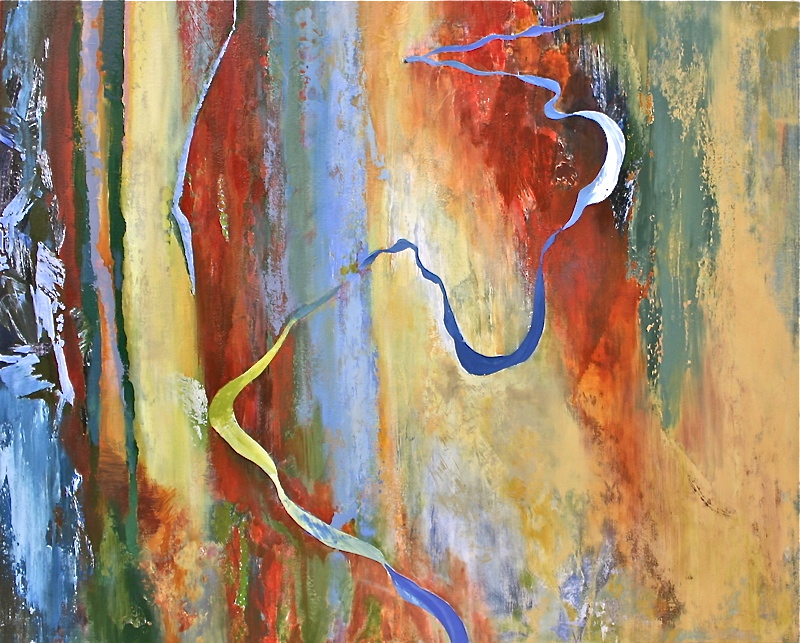If you happen to be one of the many people who decry abstract art to be nothing more than blobs of paint haphazardly splattered on canvas, then the Morton Fine Art Gallery’s newest exhibit, Fragmentation and Integration, probably isn’t for you. If you have an appreciation for the form or a mind open to exploring new mediums, however, the exhibit offers a thought provoking experience for both art-enthusiasts and newcomers alike, largely due to its laid-back environment and the relative accessibility of some of the works.
The set-up of the exhibit is simple and lets the art speak for itself, with the pieces hanging from bare white walls and no overly complex lighting. With the exception of two pieces hanging on the far wall of the gallery, Fragmentation and Integration divides the room into two halves, with the work of Andrei Petrov found on the left and that of GA Gardner on the right.
While both artists’ work is certainly impressive, I found myself particularly drawn to Petrov’s paintings and the contemplation they encouraged. Working with oil and a variety of differently sized canvases, Petrov’s six paintings deal with the idea of fragments of memory and the mind’s attempts to put them back together.
This overriding concept is most easily spotted in Petrov’s first two pieces on display, the aptly titled “Cognitive Distortion” and “Moroccan Field Trip.” In the background of the latter painting, a series of stripes gradually grows messier and more jagged toward the right of the canvas. What most immediately draws the eyes, however, is a ribbon-like line flowing through the middle of the piece. To me, this curving line stuck out like a single coherent thought lost amongst a swirl of various ideas.
Interesting, but somewhat less captivating, are Gardner’s pieces. Created primarily with magazine and book cutouts and arranged in a paint collage format, the Trinidad native’s work focuses in part on his cultural identity. The most prominently displayed piece, “Home,” showcases this connection to the artist’s homeland and through its lush hues of green evokes images of a Caribbean jungle.
The highlight of Gardner’s segment was the final piece, “Red, White, Blue, and Black,” a massive work featuring cutout strips of multiple colors crisscrossing throughout the canvas. While largely without white space near the top, the piece opens up toward the bottom and creates a visual progression that led to more room for exploration than any of Gardner’s other works.
While crafted from different mediums and engaging the viewer in very different ways, the works of Gardner and Petrov complement each other in a unique manner that I can’t quite put my finger on. While certainly abstract, much of the work is still accessible enough that even a contemporary art novice like myself can enjoy and glean some meaning from it. With its small size and comfortable atmosphere, Fragmentation and Integration is a good choice for anybody looking to let their mind drift and enjoy art in an intimate setting.





